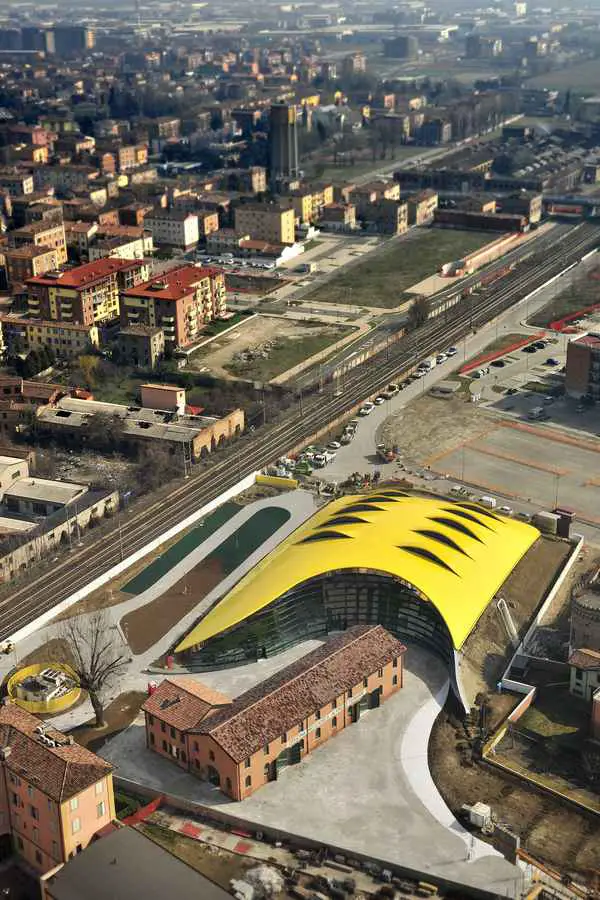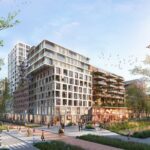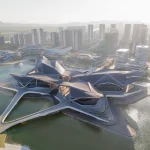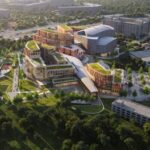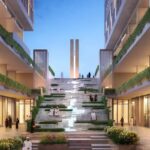Future Systems Architects, Buildings, England, Studio, Photo, Project, Design Office Info
Future Systems Architecture
Contemporary British Architecture Practice, Europe: Former UK Design Studio
post updated 23 May 2025
Final Project by Future Systems – Enzo Ferrari Museum
14 Mar 2012
Museo Casa Enzo Ferrari, Modena, Italy
Date built: 2012
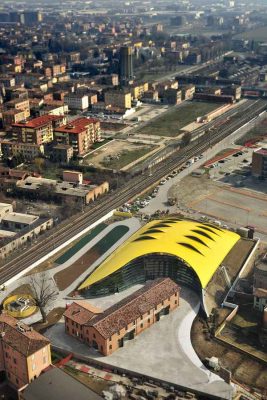
photograph © Studio cento29
Museo Casa Enzo Ferrari
The Enzo Ferrari Museum in Modena was designed by Jan Kaplický architect.
Following Jan’s death in 2009, Andrea Morgante, formerly of Future Systems, has seen the project through to completion. Andrea Morgante works at Shiro Studio, based in London.
The new building has been constructed to Kaplický’s original design – it is sensitive to the existing historical context, combines the latest in construction and energy saving technology, and resonates in spirit, language and materials with the cars it is intended to showcase. The fully restored house and workshop provide additional exhibition space designed by Morgante.
Future Systems Furniture
Jan Kaplicky Sofa Design
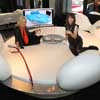
photograph from Resort Living
Future Systems Sofa – Architectural Product
Future Systems Exhibition
The exhibition “Remembering Jan Kaplický – Architect of the Future” at the Design Museum in London
Curator : Deyan Sudjic
Dates: 1 Jul – 1 Nov 2009
Deyan Sudjic comments: “Jan was a remarkable architect, and a brilliant artist. We can only now begin to understand his impact on the shape of the contemporary world”.
Future Systems Exhibition at the Design Museum
Future Systems
The husband and wife partnership of Jan Kaplicky and Amanda Levete are to split after twenty years.
Kaplicky (Czech), 71, will retain the Future Systems name he established in 1979 and will work with about 10 staff; Levete (Welsh), 53, will operate under her own name with about 40 staff.
They divorced in 2006 and have both since remarried. Kaplicky married Czech film producer Eliska Fuchsová in 2007. Apparently their design approach diverged with Jan wishing to fully exploit curvilinear ideas, often labelled as ‘blob architecture’.
Levete’s new practice has a commission from James Murdoch, the chief executive of News Corporation in Europe and the Middle East, to rebuild the headquarters of the Times and Sun at Wapping, east London.
Kaplicky considered his new national library in Prague could be the grand finale to his career.
Formation of Amanda Levete Architects – 12 Mar 2009
Major Future Systems Projects
The Czech National Library, Czech Republic
Date built: 2007-
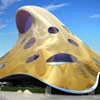
image from architect
Prague Library : design competition winner
Selfridges Birmingham : Bullring, Birmingham, England, UK
Date built: 2005
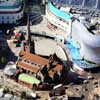
photo © webbaviation
Birmingham Bullring
The Selfridges Building is a landmark building in Birmingham, England. The building is part of the Bullring Shopping Centre and houses Selfridges Department Store. The building was completed in 2003 at a cost of £60 million. It has a steel framework with sprayed concrete facade. Since its construction, the building has become an iconic architectural landmark and seen as a major contribution to the regeneration of Birmingham. It is included as a desktop background as part of the Architecture theme in Windows 7.
Luas Bridge, Dublin, Ireland
Date built: 2007-
Geoffrey Chaucer School, New Kent Road, southeast London, England, UK
Date built: –
Oosterdokseiland, Amsterdam, Netherlands
Date built: –
Project with Bennetts Associates & MacCreanor Lavington Architects
Oosterdokseiland Masterplan: Erick van Egeraat Architects
Key Future Systems Buildings
Glasgow Bridge Project designed with local firms Mckeown Alexander Architects (part of PJMP, latterly JM Architects)
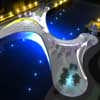
image from architect – no larger picture
People’s Crossing – Architecture:
Mott MacDonald Ltd, Franklin and Andrews, Future Systems, McKeown Alexander
Stand, Peter McCaughey, Loci
Glasgow Bridge entries – featured on the Glasgow Architecture website
Lord’s Cricket Ground Media Stand, St John’s Wood, northwest London, England, UK
Date built: 1998-99
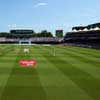
Lord’s Ground from MCC : Photo © Anthony Devlin
Lord’s Media Stand – NatWest Media Centre
Stirling Prize Winner 1999
The Lord’s Media Centre, officially known as the J.P. Morgan Media Centre for sponsorship reasons, is a building at Lord’s Cricket Ground, London.
This unusual organic building cost around £5 million. The Media Centre, which was built by Pendennis Shipyard from the UK in combination with Centraalstaal from The Netherlands, was commissioned in time for the 1999 Cricket World Cup. It was the first all aluminium, semi-monocoque building in the world. It was built and fitted-out in two boatyards and utilises boat-building technology. It has only one opening window.
Underground House, Pembrokeshire, south west Wales, UK
Date built: 1998
for Labour MP Bob Marshall-Andrews
Hauer-King House, 40 Douglas Rd, Islington, northeast London
Date built: 1994

photo © Nick Weall
East London Architecture Photos
One of Future Systems’ first UK buildings – private home
Meadlands Primary School, Richmond upon Thames, southwest London, England
Date built: 2005
Classroom of the Future, Broughton Avenue:
prefabricated moulded GRP oval-section cylinder
Wild at Heart – flower shop, 49a Ledbury Rd, Notting Hill, London W11
–
Design Projects
Abu Dhabi Masterplan
Date built: 2005
The Ark – Earth Centre, nr Doncaster, Yorkshire, north England
Date: not to be built
Other Designs
Champagne buckets for the Ivy restaurants
Coathangers for Marni
Future Systems are best known for Selfridges Birmingham and their earlier Lords Cricket Ground Media Stand. The architects have a reputation for organic architecture ie where the section and plan are curvilinear. Future Systems have also completed some notable bridges.
London Shop
Date built: 2004

photo © Adrian Welch
Future Systems Shop – Oxford Street London store
Design for Glasgow Bridge architecture competition:
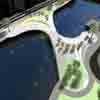
Glasgow Bridge image – no larger image
Location: London, England, UK
Notting Hill Architects Practice Information
Architect offices in Notting Hill, west London
Architects Background
Future Systems was run by Jan Kaplicky and Amanda Levete. For years they designed visionary buildings with little to show, but then they had a starkly modern house built in northeast Islington and rose to fame with their Lords Cricket Ground Media Stand. This was criticised for looking space age but being made using old-fashioned, slow techniques in a Cornish boat-building yard. Nevertheless Future Systems have certainly pushed the boundaries of English architecture, indeed building design globally.
One of their highest profile buildings in recent years was Selfridges in Birmingham. Located at the Bull Ring the result has a close relationship with their wacky model from their early days of Trafalagar Square, London. Selfridges were a brave client – they had also approached Toyo Ito for a Glasgow store – but the result has a poor relationship with the pedestrian: it looks cool but appears to fail on basic ergonomic levels.
Jan Kaplicky left Czechoslovakia in 1968 and worked for Richard Rogers then Norman Foster before founding Future Systems in 1979. Kaplicky in 2002 published a book entitled Confessions. Jan Kaplicky and Amanda Levete had a son, Josef.
Architect studio based in British capital at 21C Conduit Place, London W2 1HS, UK
London Architecture
London Architecture : news + key projects

photo © Adrian Welch
London Architect – design studio listings
Lords Cricket Ground Media Stand: Stirling Prize Winner 1999
Buildings / photos for the Future Systems Architects page welcome
Website: Future Systems Architects – Wikipedia page

